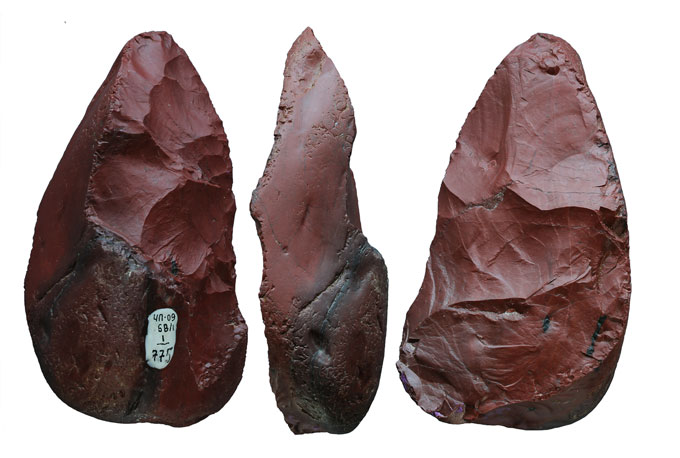Neandertals were epic wanderers.
These ancient hominids took a 3,000- to 4,000-kilometer hike
from Eastern Europe to the Altai Mountains in southern Siberia around 60,000
years ago, a new study concludes. The evidence is in their handiwork,
scientists say, though it’s unclear how long the journey took or if it involved
several geographically dispersed Neandertal groups passing technical knowledge along
the route.
Neandertals at sites in what’s now Crimea and the northern
Caucasus, just north of the Black Sea in Eastern Europe, and others who
occupied Chagyrskaya Cave in southern Siberia crafted comparable
stone tools between around 59,000 and 49,000 years ago, researchers report
January 27 in the Proceedings of the National
Academy of Sciences.
“Neandertals were intrepid explorers in their own right,”
says Richard Roberts, a geochronologist at the University of Wollongong in
Australia.
Eastern European and southwestern Asian Neandertals probably
hunted wild horses and bison across grasslands and foothills, Roberts,
archaeologist Kseniya Kolobova of the Siberian Branch of the Russian Academy of
Sciences in Novosibirsk and their colleagues say. Cold, dry conditions pushed
at least some of those Neandertals eastward along with migrating herds of prey
roughly 60,000 years ago, they suggest.
That wasn’t the first such journey for our extinct
evolutionary relatives. European Neandertals already had migrated into southern
Siberia more than 100,000 years ago. But the Neandertals who reached Siberia’s
Denisova Cave (SN: 1/30/19) —
about 100 kilometers east of Chagyrskaya Cave — made a different type of stone
tools, suggesting these Neandertals were part of a separate migration to the
region, the researchers say.
Excavations at Chagyrskaya Cave since 2007 have unearthed 74
Neandertal fossils and around 90,000 stone artifacts. Kolobova’s group compared
4,132 stone tools found at the Siberian cave to stone artifacts from Denisova
Cave and Neandertal sites in Europe and western Asia to reach their conclusions.

Ancient genes support the researchers’ argument. Another
team reported in 2019 that DNA
extracted from a Chagyrskaya cave Neandertal fossil more closely resembled DNA
of several European Neandertals than DNA of an approximately 110,000-year-old
Denisova Cave Neandertal. And the
Neandertal mother of a Denisova
Cave hybrid girl (SN: 8/22/18) who
lived between 79,300 and 118,100 years ago also had DNA
more like that of European Neandertals than of an older Neandertal from the
same Siberian cave (SN: 1/30/19).
Combined with those genetic findings, the new paper
“suggests there were two peopling events [by Neandertals] originating in
western Eurasia and reaching the borders of the Denisovan domain in eastern
Asia,” says paleoanthropologist Jean-Jacques Hublin of the Max Planck Institute
for Evolutionary Anthropology in Leipzig, Germany. Denisovans,
an Asian hominid population closely related to Neandertals, were first
identified at Denisova Cave (SN: 8/30/12).
Periods of sharply warmer temperatures starting around
128,000 years ago turned western Asian landscapes grassier and shrank the size
of the Caspian Sea, probably enabling several waves of Neandertals to reach
southern Siberia, says Hublin, who did not participate in the new study.
Neandertals probably didn’t intend to travel as far as
either Denisova Cave or Chagyrskaya Cave, Hublin contends. During warm periods,
eastward expansions of only 100 kilometers per generation could have taken
Neandertals from Eastern Europe to southern Siberia in 600 or 700 years.
The same Neandertal population need not have traveled all
the way from Eastern Europe to southern Siberia, says archaeologist Steven Kuhn
of the University of Arizona in Tucson. Various Neandertal groups could have
passed toolmaking techniques eastward, from one population to the next, as
their numbers gradually expanded and each group slowly spread over a larger
area, suggests Kuhn, who also did not take part in the new study.
